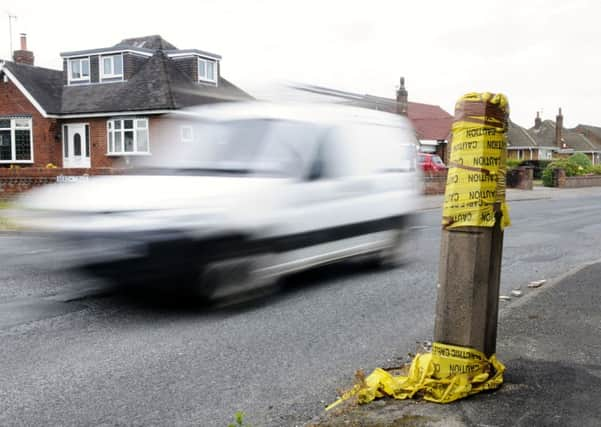Concern over ‘high risk’ street lights


More than 3,500 ageing street lights in Wyre have been deemed ‘high risk’ by highways chiefs – sparking fears they could fall on someone.
Around a third of the 11,000 lights classed as high risk in Lancashire are in the Wyre Council area, which includes the towns of Fleetwood, Thornton, Cleveleys and Poulton.
Advertisement
Hide AdAdvertisement
Hide AdThere are 3,579 high risk columns in Wyre – higher than anywhere else in the county, and dwarfing the tiny number of high risk lights in the Preston, Hyndburn, Pendle, Ribble Valley and South Ribble council areas. In Fylde, which includes St Annes and Lytham, there are 593 ‘high risk’ columns.
But while pledging cash to try and improve the situation, Lancashire County Council is also considering reducing the number of street lights.
A report outlining its plans to improve highways amid ‘financial austerity’ says: “The risk to the public from a column falling over is generally low, however, half of our columns exceed the age when they should be regularly tested or considered for replacement or removal.
“The best strategy is to reduce the likelihood of columns falling over by either replacing or removing the highest risk columns, or removal of columns without replacement.”
Advertisement
Hide AdAdvertisement
Hide AdThe report says another 23,000 medium risk columns will move into the high risk bracket within five years.
The council is prioritising investment in highways improvements, with an emphasis on preventing problems like potholes. But street lighting will not be a high priority until the 2025 at the earliest, when the yearly investment will double from £2m to £4m.
And the council admits £6m a year would be needed just to maintain the current rate of deterioration of its 147,600 lights.
Fleetwood town councillor Ivor Bould said he believed the county council needed to look at the matter ‘very seriously’.
Advertisement
Hide AdAdvertisement
Hide Ad“You never know when one of these columns might collapse when they have been up for so many years,” he said.
“If they need replacing they need replacing, otherwise there could be serious consequences.
“I’ve seen them replacing street lights elsewhere, but it doesn’t seem to happen in Fleetwood. You have to wonder why there is such a big discrepancy between Wyre and other areas.”
Transport charity Sustrans last month launched a Campaign for Safer Streets to enable more children to walk and cycle to school, and Peter Foster, from its Lancashire branch, said he would be concerned by any removal of street lights.
Advertisement
Hide AdAdvertisement
Hide Ad“Road safety is a big concern for parents in the North, and poor or little street lighting in winter only adds to the problem,” he said.
Peter Mayes, the county council’s highways assistant director of commissioning, said most street lights were in a good condition. He said those at high risk were near the end of their recommended lifespan and needed to be repaired more often.
“Safety is our top priority and where assets are identified as ‘high risk’ it does not mean they pose a high risk to the public or are in a condition where they are likely to fail, instead it means they place more pressure on the county council’s resources,” he said.
“The installation of streetlights often coincides with new development, consequently the proportion of columns that need replacement varies for different locations, and currently there are more in Wyre than most other places.
Advertisement
Hide AdAdvertisement
Hide Ad“The council is investing this year to replace columns in Wyre and there is a regular inspection programme to identify any defects for columns not being replaced.”
Mr Mayes added that only around 20 street lights ‘failed’ each year, usually due to high winds or because they had been hit by a vehicle.